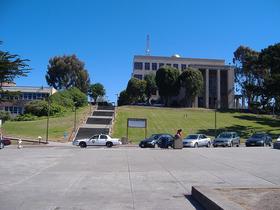Imagine a journey that begins in elementary school, winds through the halls of middle school, and intensifies in high school, all leading to the ultimate destination: a bachelor's degree in college. This is the well-trodden path that many students in the United States follow, a familiar route that shapes their educational experience and future aspirations. However, with the increased popularity of community colleges, some are walking a different path to higher education. These students are considered Reverse Transfer Students, and if you choose to become one, you may find your educational experience greatly affected in a positive way.
This video recounts a student who transferred from a four-year college to a community college.
What is a Reverse Transfer Student?
Although many people are comfortable with the traditional journey to higher education, some students need the opportunity to “back up” while pursuing a higher degree.
These reverse transfer students have graduated high school and attended college for some time or, in some cases, have even graduated from a traditional four-year college. For a variety of reasons, though, these students decide that the traditional four-year college is just not for them, and they embrace the opportunity to enroll in and attend a two-year community college.
Subsequently, they transfer from their four-year college and join a two-year college. While they are moving forward in terms of their education, they are “taking a step back” by switching from a traditional college or university to a community college. Hence, they are reverse transfer students.
This video offers a look at the reverse transfer process.
Why do students become Reverse Transfer Students?
Embarking on a college journey isn't always a straight path. For some students, the road takes an unexpected turn, leading them from a four-year institution back to a community college. This phenomenon, known as "reverse transfer," is more common than you might think and happens for a variety of compelling reasons.
Academic Challenges and Personal Growth
Some students find the academic demands of a traditional four-year college overwhelming. Rather than risk academic probation, they opt for the supportive environment of a community college. Others may feel unprepared for life away from home or lost in the crowd of a large university campus.
Flexibility and Supplemental Learning
Interestingly, reverse transfer isn't always about leaving a four-year school entirely. Many students choose to attend community college concurrently with their university studies. They might be looking to fulfill prerequisites, take specialized courses, or simply supplement their education in a more affordable setting.
Career Advancement and Lifelong Learning
Even after graduating from a four-year institution, some individuals return to community college. These lifelong learners seek specific classes or certifications to boost their career prospects or earning potential.
Financial Considerations
In today's economic climate, financial reasons often drive the decision to reverse transfer. Whether it's the loss of a scholarship or changing financial circumstances, community colleges offer an affordable alternative without sacrificing educational quality.
A Path Forward, Not Backward
Regardless of the reason, becoming a reverse transfer student doesn't mean giving up on higher education dreams. It's a strategic move that can open new doors and provide fresh perspectives. If you're considering this path, know that community colleges offer numerous benefits, from smaller class sizes to career-focused programs.
Remember, your educational journey is unique. Whether you're seeking a better fit, aiming to advance your career, or navigating financial challenges, community college could be the key to unlocking your potential and achieving your goals.
This video recounts the story of a student who did the reverse transfer.
Benefits of Becoming a Reverse Transfer Student
Choosing to become a reverse transfer student can offer a multitude of benefits beyond the immediate relief from a stressful environment or the potential for increased earning power. Here are some key advantages that might not be immediately obvious:
Significant Cost Savings
One of the most compelling benefits is financial. Community colleges generally have lower tuition fees compared to four-year institutions. In a perfect world, finances wouldn't dictate educational choices, but the reality is different. For students struggling with the high costs of traditional colleges, reverse transferring can provide immediate financial relief, allowing them to continue their education without the burden of excessive debt.
Smaller Classes and Closer Interaction with Professors
Community colleges typically offer smaller class sizes, which can enhance the learning experience. Unlike large lecture halls at traditional universities that can host hundreds of students, community colleges maintain more manageable class sizes. This fosters better communication between students and instructors, creating a more personalized and engaging educational environment. Additionally, community colleges often welcome reverse transfer students, seeing them as valuable role models who contribute positively to the academic community.
Accelerated Path to a Bachelor's Degree
Another significant advantage is the potential to expedite the completion of a bachelor's degree. By taking courses at both a four-year institution and a community college simultaneously, reverse transfer students can tackle more required classes at a faster pace. This dual enrollment approach can lead to quicker degree completion, allowing students to enter the workforce sooner and start earning a salary, thereby reducing the overall cost of their education.
Additional Benefits
- Convenient Class Schedules and Locations: Community colleges often offer more flexible class times and locations, making it easier for students to balance their studies with other commitments.
- Enhanced Career Training Opportunities: Many community colleges provide specialized training programs that can better prepare students for specific career paths.
- Improved GPA: The supportive environment and smaller classes can help students improve their academic performance and overall GPA.
Ultimately, becoming a reverse transfer student provides more options and flexibility in one's educational journey. This increased choice can be the greatest benefit of all, empowering students to tailor their education to better fit their personal and professional goals.
Conclusion
Most students are still following the traditional path to higher education. However, a growing number of students are embracing the idea of being a reverse transfer student. If you choose to follow that path, know that the process of becoming one is relatively simple, and the benefits will stay with you long after you have left school.
Questions? Contact us on Facebook @communitycollegereview.















